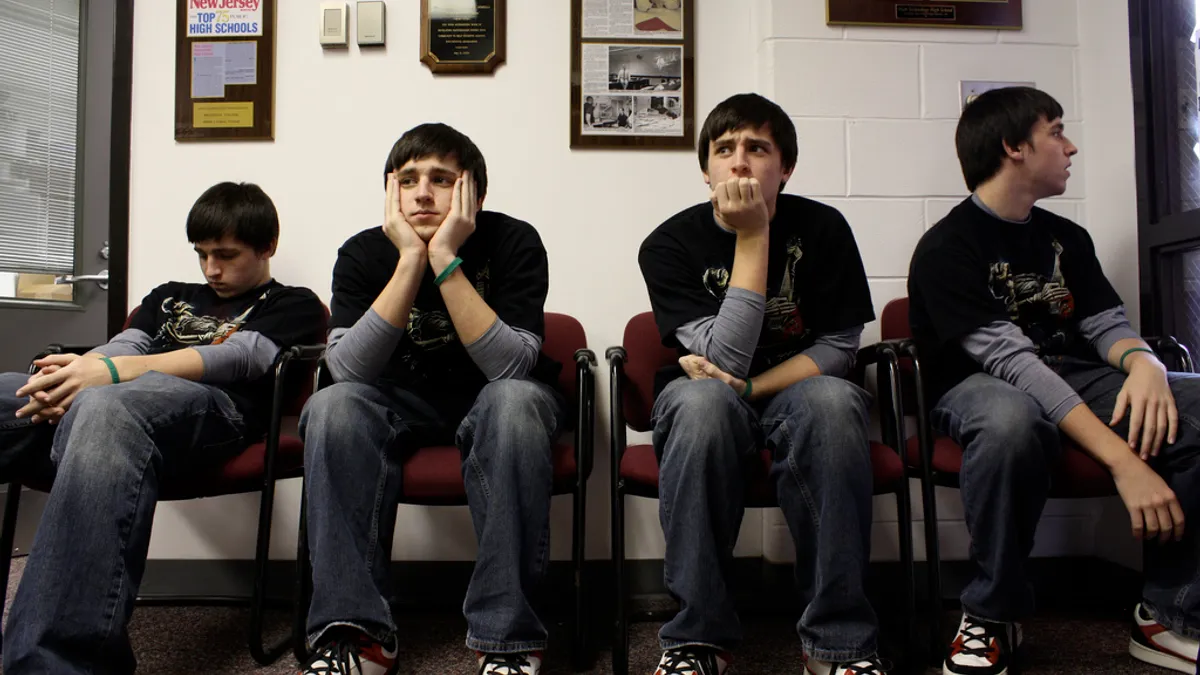Robert Van Wyck Middle School in New York City has about 1,650 students, and four years ago it averaged about 150 suspensions per year. By the end of the first semester this year, there had only been a dozen.
Longtime Principal Patrick Burns credits plummeting suspensions to a combination of factors and an ability to track progress.
Importantly, the school culture has undergone a shift. Teachers and administrators have become more mindful of the social-emotional aspects of child development at the middle school level. They pored over research about preadolescent behavior and took a new approach with their responses. They also implemented restorative justice practices, asking students to reflect on their behaviors, take responsibility for them, and find opportunities for resolution.
A schoolwide badging system has made a game out of tracking progress and provided further incentive for students to be reflective about their own behaviors.
Teachers have long tracked disciplinary infractions, noting when students show up to school out of uniform or are late to class, but at Robert Van Wyck Middle School, teachers created a range of good behavior categories to track as well. When students display good citizenship or empathy, their teachers log those actions.
If a student behaves badly but mitigates the first action with something like a note of apology, teachers can resolve negative notes from the online tracking system.
“This resolved piece aligns really nicely to our restorative approach practices,” Burns said.
Every six to eight weeks, students have an extended homeroom period where they look at progress reports relating to their behavior. They can see how often they were tracked because of good versus bad behavior and see a chart showing the change in their overall, summative score.
Students are asked to be reflective. After each of these extended homeroom periods, students complete a survey about where their progress puts them in relation to last year and what steps they plan to take to continue to grow.
Behavioral high achievers are placed into bronze, silver and gold categories and celebrated at assemblies and most-improved breakfasts where their progress is put on par with academic high performance. Burns said the gaming culture among today’s kids contributes to their drive to “level up” and reach silver and gold status.
Initially some teachers were wary of the extra work that would go into tracking individual student behavior on a daily basis. The middle school retooled the PupilPath system from IO Education, where teachers already logged student grades and assignments and sent home parent communication. The system allows teachers to note an entire class displayed particularly good citizenship one day, or assign that positive achievement to a handful of students at once, and it also gives teachers the option of sharing that information with their colleagues, deans or parents with a single click.
Looking back, Burns said the online system gave his team the ability to see the data. That’s what is most important, regardless of the actual system used.
“It doesn’t have to be PupilPath, but a system where you’re grabbing this information and setting it against an expectation of growth, and then you’re able to go back and measure it,” Burns said.
Traditional letter grades conflate academic performance with behavioral skills and habits. At Robert Van Wyck Middle School, a separate badging program has helped isolate the behavioral side of things. In other schools around the country, standards-based grading has required a similar separation.
With standards-based grading, letter grades are limited to student mastery of academic concepts and skills. Because educators recognize their job is partly to socialize students as well, these schools still hold students accountable for their behavior, class participation and homework completion through a separate reporting mechanism.
Key to both paths is giving students an opportunity to reflect on their own progress and plan for future growth using concrete data.













